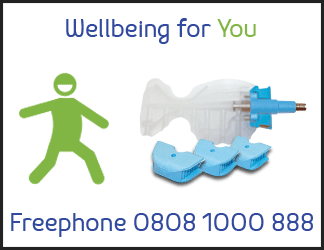
 Dr James Tomlinson continues to advocate the use of loupes and a light, how they’re suitable for any pre-existing eyesight problems and useful for all dental clinicians.
Dr James Tomlinson continues to advocate the use of loupes and a light, how they’re suitable for any pre-existing eyesight problems and useful for all dental clinicians.
Unbeknown to most, a lot of the stress in dentistry is often caused by not being able to see what you are doing properly or trying to work with unreliable or unsuitable equipment. Quite simply, if you can’t see properly inside the patient’s mouth you end up struggling with your posture, causing issues with your neck, back and shoulders, which can lead to long-term health problems. This is where loupes and a light can become your saviour – whoever you are!
For prescription lenses
Over the years and as my eyesight has changed, I have gradually increased the magnification of my loupes, but for the first time these particular loupes have been fitted with prescription lenses to match the reading glasses I now use in everyday life. This is a great help to me as my old non-prescription loupes meant I had to constantly take them on and off in order to read the computer screen. Now I can look up and read what’s on the screen and carry on working with no problems at all.
For first-timers
I use my loupes for absolutely everything I do – from check-ups to complex surgical procedures – but being on my third pair in 20 years means I have been through an extensive learning curve. Any newcomers to loupes and lights will need to go through a similar process.
Key to this is not expect to simply put them on and start working as you normally would immediately. You need to give yourself and the loupes a bit of time. I recommend clinicians start their loupe journey with a low magnification, using this for all general procedures and getting used to the enhanced vision, before gradually moving onto a higher magnification for more complex procedures. Once you’re used to them, very rapidly you’ll find that you use them all the time – and you won’t go back.
I try to encourage my colleagues to use loupes and a light for all their procedures. This includes hygienists who may not normally consider using loupes, yet alongside greatly improving their working posture they make it so much easier to see calcification and staining, especially with a loupe-mounted light.
For investing in your future
My first loupes purchase from Evident was very impressive. Their loupes and light specialist, Karin White, came to visit me at my practice so she could see me at work in my own surgery, assess my posture and take all the necessary measurements and details of my prescription so my loupes could be custom made.
The quality of my loupes is excellent, and though maybe not the cheapest on the market, you certainly get what you pay for and I view them as a serious long-term investment. Consider this against having to take time off work, or worse – early retirement – for problems caused to your neck, back and shoulders due to poor working posture by not wearing loupes and a light.
The bottom line is that I don’t believe clinicians who choose not to wear loupes can really see what they are doing properly. You can’t treat what you can’t see and without loupes there’s an awful lot you can’t see. More importantly, the biggest benefit they give is to the overall health and wellbeing of the clinicians – which you simply cannot underestimate!
To read part 1 of my journey to find loupes, click here.
To find out more about selecting the right pair of loupes for you, click here and we’ll be in touch with our recommended solutions.
Facebook: Evident
Twitter: @EvidentDental
#livelifedental
Clinical Director James Tomlinson B.Ch.D. MFGDP(UK) M.Med.Sci (Oral & Maxillofacial Implantology) Specialist in Oral Surgery






[…] To read part 2 of my journey into finding loupes, click here. […]